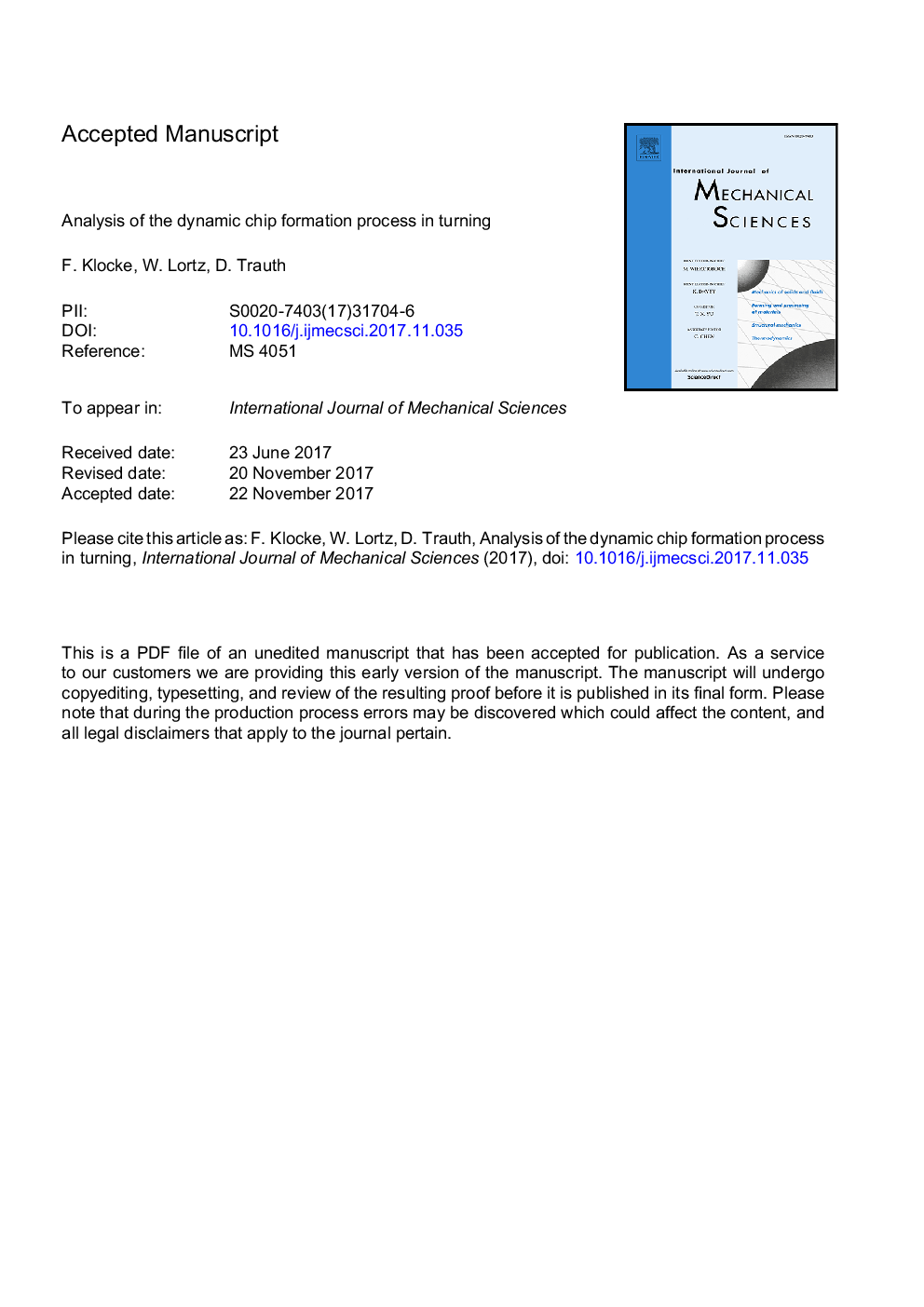| کد مقاله | کد نشریه | سال انتشار | مقاله انگلیسی | نسخه تمام متن |
|---|---|---|---|---|
| 7173953 | 1464954 | 2018 | 34 صفحه PDF | دانلود رایگان |
عنوان انگلیسی مقاله ISI
Analysis of the dynamic chip formation process in turning
ترجمه فارسی عنوان
تجزیه و تحلیل فرایند تشکیل تراشه پویا در چرخش
دانلود مقاله + سفارش ترجمه
دانلود مقاله ISI انگلیسی
رایگان برای ایرانیان
کلمات کلیدی
پیچ، تشکیل تراشه، اثرات پویا، پلاستومکانیک،
موضوعات مرتبط
مهندسی و علوم پایه
سایر رشته های مهندسی
مهندسی مکانیک
چکیده انگلیسی
Any surface orthogonal indentation into a metal structure with friction leads to a deformation in the interface between indenter and material. Transferring this observation to turning and taking the cutting velocities vc and vchip into account results in a stagnation point in the chip formation process. The friction behaviour depends on the velocities vc and vchip and under standard conditions leads to a build-up edge (BUE), build-up layer (BUL) and a self-blockading effect. Any variation of velocities vc and vchip changes the position of the aforementioned stagnation point and consequently the position of the BUE. This is demonstrated regarding a non-steady cutting process during the first revolution of the workpiece, where no chip formation occurs. Based on this, the external and internal friction during the chip formation process is analysed. A very good correspondence between analytical and experimental results, as well as between the existing external friction between tool and material and the internal friction, are observed. Furthermore, this result helps to create a new dynamic model based on mathematical-physical relations involving strain hardening, dynamic body forces, and deformation as a result of plastic strain rate with internal and external friction. For the case of turning C45 steel (material number 1.0503) at vc=5Â m/min, not only the movement of particle flow producing flank and crater wear is shown, but also the dynamic movement of the BUE with the corresponding frequency and strain hardening with decreasing strain rate is developed and mathematically described by a regression function. In addition, as a result of strain rate and friction, the temperature in the chip formation zone is estimated. Finally, the self-blockading effect of the cutting process is demonstrated considering internal friction, metal deformation, dynamic body forces, and temperatures. Experiments show a high degree of conformity between analytical and experimental results.
ناشر
Database: Elsevier - ScienceDirect (ساینس دایرکت)
Journal: International Journal of Mechanical Sciences - Volume 135, January 2018, Pages 313-324
Journal: International Journal of Mechanical Sciences - Volume 135, January 2018, Pages 313-324
نویسندگان
F. Klocke, W. Lortz, D. Trauth,
